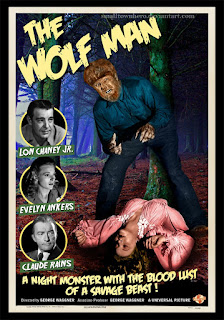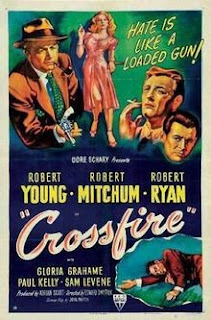Watchingwell

Curated classic films
The 1940s
Mystery! Crime! Suspense!
Here we are back in iconic-ville for a survey in the next category of the film classics of the 1940s: Mystery! Crime! Suspense!. Since I am kind of partial to mysteries, these include some of my favorites. Although I am presenting 20 iconic films in this category, I am only going to discuss my particular favorites in any detail.
 My number one favorite in this category is The Maltese Falcon from 1941. It is just a perfectly-told tale starring Humphrey Bogart and Mary Astor with a great ensemble of character actors, including Peter Lorre and Sydney Greenstreet. Crisply directed by John Huston who adapted the screenplay from Dashiell Hammett's book, the mood is shady and cynical. But it is Bogart's smart-talking, tough-guy detective who defines the genre in remarking "when someone kills your partner, you're supposed to do something about it".
My number one favorite in this category is The Maltese Falcon from 1941. It is just a perfectly-told tale starring Humphrey Bogart and Mary Astor with a great ensemble of character actors, including Peter Lorre and Sydney Greenstreet. Crisply directed by John Huston who adapted the screenplay from Dashiell Hammett's book, the mood is shady and cynical. But it is Bogart's smart-talking, tough-guy detective who defines the genre in remarking "when someone kills your partner, you're supposed to do something about it".
My other number one favorite (yes, there are 2) is the noir classic directed by Otto Preminger, Laura, from 1944. I watch this every chance I get. There is no suspense, I know the plot, scene-by-scene. I know the script. I just like watching the interplay of the characters: Gene Tierney and Dana Andrews, Dana Andrews and Clifton Webb, Clifton Webb and Vincent Price. It's all very delicious. Great black and white photography.
 The Big Sleep from 1946 is another one of my favorites that has the right kind of mood and a very long and confusing plot. But director, Howard Hawks, infuses it with enough style to keep you interested watching Bogart, this time playing Raymond Chandler's private eye, Philip Marlowe, wooing Lauren Bacall's character while detecting for her father.
The Big Sleep from 1946 is another one of my favorites that has the right kind of mood and a very long and confusing plot. But director, Howard Hawks, infuses it with enough style to keep you interested watching Bogart, this time playing Raymond Chandler's private eye, Philip Marlowe, wooing Lauren Bacall's character while detecting for her father.
^*^*^*^
The next two films have a similar plot: an older husband with an insurance policy is on borrowed time when his wife kindles a sizzling romance with a corruptible stranger. Both films are based on novels by James M. Cain. Fred MacMurray is drawn into a deadly plot by Barbara Stanwyck in Double Indemnity from 1944, directed by Billy Wilder, and in 1946, Tay Garnett directs Lana Turner drawing in John Garfield in The Postman Always Rings Twice. It is worth noting how much smouldering tension can be conveyed working within the production codes of the 1940s. The first appearance of Stanwyck walking down the stairs, ankle bracelet first, and Turner, from her ankles up to her shorts, all in white, including her turban over platinum hair, and we know where this is going. Couldn't get more iconic.
Now, the next two are films that I like and I don't like, that is, I really like, but I don't feel comfortable watching. Gaslight from 1944, directed by George Cukor, starring Ingrid Bergman and Charles Boyer. I really don't like watching Boyer in the role of the villain as the mind of Ingrid's character, Paula, gets more and more feeble. But I watch it for the ending. Because it has one of the best comeuppances on film. It is a kind of sisterhood thing -- for all the women who have been belittled and "gaslighted" by a controlling man. From the scene where Joseph Cotten breaks open Boyer's desk and finds the letters that confirm that Paula is not crazy, and Elizabeth, the maid, says to Boyer, enigmatically, "Yes, sir, I see just how it is", it is a wonderful catharsis and a superb (Academy Award winning) change from a defeated Paula to a redeemed woman, angry enough to toy with Boyer in revenge.
The other film about which I am similarly ambivalent is Out of the Past from 1947, starring Robert Mitchum and Jane Greer, with Kirk Douglas. Directed masterfully by Jacques Tourneur, this is on everybody's top film noir list. For me, this is almost the opposite experience of Gaslight in that there is no payoff after a very long tale of twists and turns.The ending is nowhere near as satisfying given the investment in time you've made in following the numerous betrayals and double-crosses of the plot, and the fact that none of the characters are in any way likeable. Mitchum's character is, of course, completely taken in by the amoral but seductive Jane Greer.
Otherwise, he would have had an idyllic life, we are led to believe. Right. In spite of this, it's kind of mesmerizing. If it were a book, it would be a page turner.
The following films round out my top 20 most iconic of this category from the 1940s.
1940
1941
1943

















